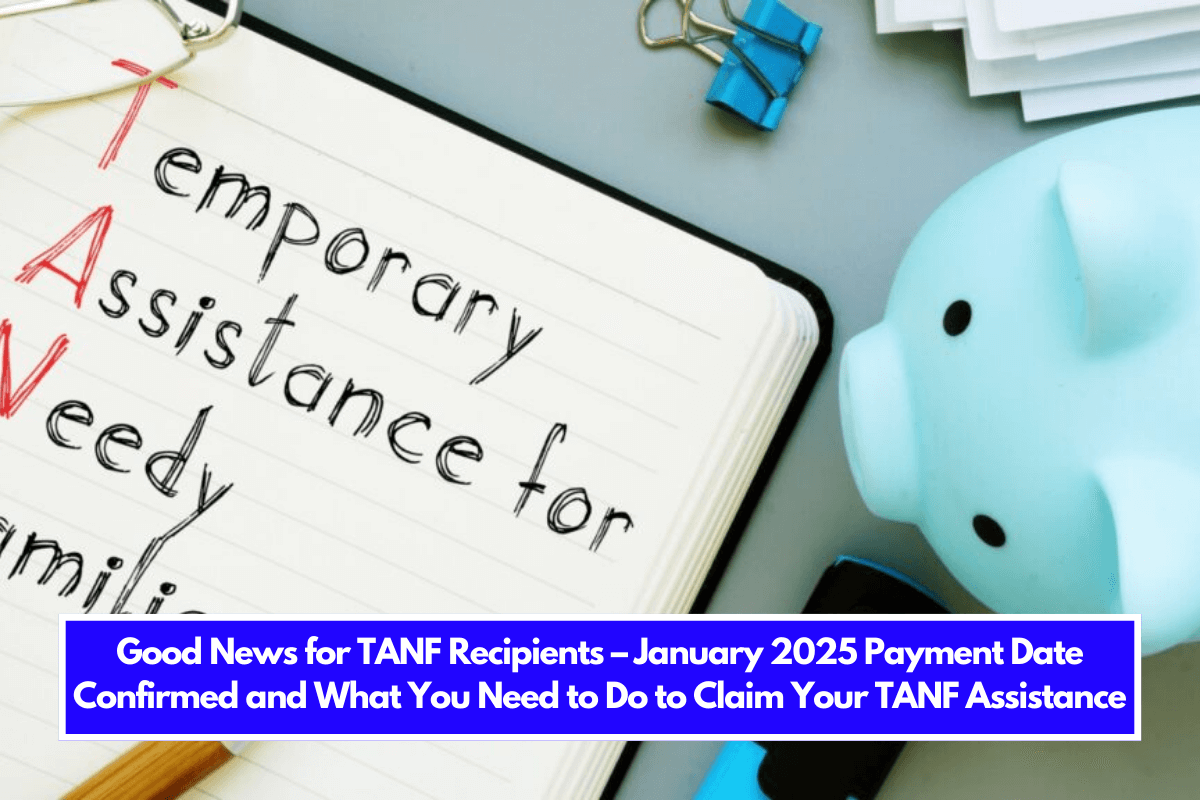A new year can be a new adventure or a continuing challenge for many families dealing with financial difficulties on a daily basis. TANF (Temporary Assistance for Needy Families) recipients are aware that they will receive cash assistance to help them overcome these challenges.
TANF not only helps families meet their basic needs, but it also allows them to plan for the future with more stability. So, if you or your family rely on TANF, it’s critical that you understand how the payments work and what to do if problems arise.
2025 has already arrived, and we’ll go over everything you need to know to start the year on a positive note!
What is TANF and how does it work?
The TANF program is administered by the states using federal funds. It is designed to assist families in difficult economic situations by providing cash assistance for a set period of time.
This money can be used to alleviate the effects of the family’s basic needs (for example, food, clothing, housing, or medical care).
Similarly, the program provides complementary services such as family training and child care support. All of this aims to increase families’ economic and financial independence.
Does this program have requirements?
Of course, as with all federal benefits, the Administration ensures that they are distributed to those in greatest need. To receive the TANF, applicants must:
- Demonstrate that the income received is below a specific level established by each State.
- Have at least one child under 18 years of age (or be pregnant)
- Actively participate in job searches or job training programs (offered by the TANF program itself)
Keep in mind that the requirements may vary depending on the state you are in, so do not hesitate to review the program rules in your state to stay informed!

What are the payment dates for this January?
TANF is usually deposited at the beginning of each month, but the exact dates vary by state and distribution method.
In general, those who receive electronic deposits receive their payments between the 1st and 5th of each month, so by the first week of January, they will already have the funds in their accounts. It is critical that you check the program calendar in your state.
For example, the TANF program in Texas is governed by the Eligibility Determination Group (EDG) number, and are distributed as follows:
- EDG # ending in 0: Benefits available on January 2nd
- EDG # ending in 1: Benefits available on January 3rd
- EDG # ending in 2: Benefits available on January 5th
- EDG # ending in 3: Benefits available on January 6th
- EDG # ending in 4: Benefits available on January 7th
- EDG # ending in 5: Benefits available on January 9th
- EDG # ending in 6: Benefits available on January 11th
- EDG # ending in 7: Benefits available on January 12th
- EDG # ending in 8: Benefits available on January 13th
- EDG # ending in 9: Benefits available on January 15th
Another example is that, in Florida, they are administered through an EBT Card called Florida ACCESS, and are delivered depending on the case number (depending on the ninth and eighth digits of the case number), your calendar would look like this:
- Case number 00-03: day 1 of the month.
- Case number 04-06, day 2 of the month.
- Case number 07-10, day 3 of the month
- Case number 11-13, day 4 of the month.
- Case number 14-17, day 5 of the month.
And so on until reaching case number 96-99, which will be delivered on the 28th of each month.
Also See :- Confirmed – Visa is raising credit card fees in 2025 – here’s how it will affect your wallet

